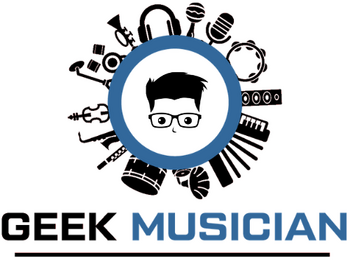
Using EQ on headphones is a topic that sparks endless conversations in audio forums and Facebook groups. It seems like every audiophile or casual music listener has an opinion on whether or not you should use EQ on headphones.
Before we even discuss this, I’m going to say right off the bat that this is a very subjective issue, and there is no one-size-fits-all answer. So, to answer the question “should you EQ headphones?” here is what you should know.
If you enjoy your headphone’s signature sound and want to avoid digital clipping at all costs, you should not EQ your headphones. However, if you want to customize your headphone’s sound to your personal preference or make your headphone’s frequency response flat, you should definitely EQ your headphones.
Let’s talk about all of the reasons why you should EQ headphones and the reasons why you shouldn’t. And then I’ll follow that up with some of the best and recommended EQ software available today for headphones.
Table of Contents
Reasons Why You Should EQ Headphones
Here are all of the reasons why it’s an excellent idea to EQ your headphones.
1. To make your headphone’s frequency response flat
Something worth mentioning is, many professional mixing engineers use speakers or headphones with a flat frequency response to mix and master music. But what exactly is flat frequency response?
A speaker or headphone with a flat frequency response accurately reproduces all of the audio frequencies that are played through it without any enhancements in certain frequencies. In other words, the input audio is exactly the same as the output audio.
One of the most popular headphones used in the studio for mixing is the Audio Technica ATH-M50x Studio Headphones (on Amazon). That’s mainly because this pair of headphones has a flat response and accurately plays back any audio without boosting or cutting some frequencies.
Mixing engineers use speakers and headphones with a flat frequency response to make unbiased decisions when they are mixing and mastering songs. And they make sure they do whatever it takes to make whatever music they are mixing sound as good as possible through these flat response speakers and headphones.
The general idea is, if the music sounds excellent through flat response headphones or speakers, they will sound good in other headphones and speakers.
So, for the average listener, if you want to hear the music you are listening to, from a mixing engineer’s perspective, you need to use flat response headphones. Using a flat response headphone will give you the best listening experience, and the music will sound its best.
However, most consumer-grade headphones are colored, or they don’t have a flat response. Many headphones have enhanced low frequencies or bass (like Beats headphones), while others have boosted mids and highs. The point I’m trying to make is, every headphone has a unique frequency response, or what we usually refer to as “color.”
And a headphone’s frequency response changes how an audio sounds. If your headphones have the low frequencies boosted, the music you are playing through these headphones will have an enhanced bass, which isn’t an accurate playback of that audio.
This is where EQ comes in. Many people use EQ to correct their headphone’s frequency response in an attempt to make it flat. And it is all in an effort to make their headphones reproduce audio frequencies accurately.
There are several ways to EQ your headphones to have a flat frequency response. The best way to do this is by using headphone calibration software like SoundID Reference by Sonarworks. I’ll talk more about this software later in the article. And then another way is to find an EqualizerAPO flat frequency response preset for your headphone. This will also be discussed later in the article. Let’s continue.
2. To calibrate headphones to personal preference
When it comes to listening to music on headphones, everyone has a preference for how music is supposed to sound like.
Many music listeners prefer heavy bass when listening on headphones, and others prefer to boost the highs and mid frequencies for more clarity.
For this reason, if you own a pair of headphones that lack bass, you can boost the low frequencies to have more bass. Similarly, if your headphones sound too bassy, you can reduce the low frequencies and boost the mids and highs to your preference.
There is no wrong or right way to EQ your headphones to your preference. All you have to do is keep tweaking the EQ settings till you are finally satisfied with your headphone’s sound.
Also, there are many headphone preset curves available on the internet that many music listeners use to calibrate their headphones to personal taste. One of such popular curves in the audiophile space is the Harman Curves.
There is more to the Harman Curves than can be explained in this article. Here is an article on Jazz Times, talking about the Harman Curve and what it’s all about.
Reasons Why You Should Not EQ Headphones
Here are a few reasons why you should not EQ headphones
1. Don’t EQ a headphone if you like its signature sound
As I talked about earlier, every headphone has a unique sound. That’s one of the main things that differentiate one headphone from the other. If you use two different headphones to listen to the same music, they will all sound different. That’s because of their unique frequency response.
For this reason, many audiophiles have multiple headphones, and they pick and choose between them, depending on the type of music they are listening to and their mood. They like all of their headphones and their uniqueness.
These types of people are totally against using EQ for headphones. They believe every headphone is unique and not perfect. And that’s what makes them stand out.
If you’re such a person, you should not EQ headphones. In essence, if you like how your headphones sound, you should not use EQ. That’s because EQ will change your headphone’s sound.
2. Using EQ can cause digital clipping
Another reason not to use EQ is that it can cause digital clipping (or distortion). What do I mean by this?
Well, digital clipping occurs when an audio signal is amplified above its maximum limit. Amplifiers built into devices like laptops and smartphones are not that powerful. These built-in amps in portable devices don’t have enough headroom.
So when you boost some frequencies using EQ, the overall volume of your audio can be more than the maximum limit of the amplifier. And that can lead to distortion.
There are ways to EQ to prevent digital clipping. And if you don’t crank your volume up to a point where it’s extremely loud, the chances of digital clipping happening is quite low. So, I don’t think you should refrain from using EQ just to prevent digital clipping.
EQ Will Not Fix Bad Headphones
EQ is undoubtedly a great tool for calibrating your headphone’s sound and improving its sound quality. But that doesn’t mean it will fix all the problems of a poorly built headphone.
In fact, in some headphones, EQ can easily cause problems such as distortion, or the headphones might begin to sound weird. There is no way EQ will damage the headphone, just as I explained in this article. However, some headphones, especially poorly built ones, may actually sound bad when you use EQ.
There are so many factors that account for the sound quality of headphones. Headphone drivers are the most important component that determines the sound quality of headphones. Other factors like the build quality, headphone casings, and even the headphone foam pads affect a headphone’s sound quality.
If your headphones have poorly built headphone drivers, they may not even change the sound when you use EQ. That’s because they are physically not capable of adjusting to the new frequency changes.
The point I’m trying to make is, EQ can definitely improve a headphone’s sound quality. However, if you own a poorly built pair of headphones, EQ won’t improve its sound quality.
Recommended Equalizer Apps for Headphones
There are many equalizer software available today on the internet. But here are two of the best EQ software for headphones.
SoundID Reference by Sonarworks
SoundID Reference by Sonarworks (on PluginBoutique) is, undoubtedly, the best EQ software for headphones. Why do I say this?
Sonarworks, the company that made SoundID Reference, has been in the audio industry for many years, which tells you they’re doing something right. They primarily make audio calibration software and hardware to help calibrate speakers and headphones to sound their best.
SoundID Reference is an upgrade of their previous EQ software for headphones, Reference 4, and this one comes with a lot more features. But what exactly is SoundID Reference?
SoundID Reference is an EQ calibration software made for speakers and headphones that sets the frequency response of speakers and headphones to have a flat response across all audible frequencies, giving them a neutral sound.
It has hundreds of EQ calibration presets for many different headphones and studio monitors. And the chances are that there is a preset for your current headphone.
One feature I like about the SoundID Reference over the previous version is that, after your headphones are calibrated to have a flat response, you can still EQ your headphones to your personal preference.
I’m currently using the SoundID Reference for my inexpensive Samson SR850 Studio Reference Headphones (on Amazon). And I must say, my headphone’s sound quality has improved tremendously.
This pair of headphones had a lot of high frequencies and was lacking in mids. And I tried several times to correct by manually EQing but had no success. Not until I started using the previous version, Sonarworks Reference 4. The improvement in the headphone’s sound was really noticeable, and I could hear the music as the mix engineers intended it.
So I immediately upgraded when SoundID Reference was released. Because I knew some of the new features would come in handy. However, one thing I wish Sonarworks will add is a Crossfeed functionality so that I can blend both the Left and Right channels together. Other than that, it’s excellent.
EqualizerAPO
EqualizerAPO is one of the best free EQ software available today. That’s mainly because it has many features to help you customize your EQ however you want it.
For many newbies, learning this software can be very intimidating. This was one of the reasons why I decided to go with Sonarworks Reference 4. That’s because its interface is newbie-friendly.
However, if you take the time to learn the EqualizerAPO, you can basically achieve any sound you want, especially if you know how sound and audio frequencies work.
Also, there is an online community built around EqualizerAPO. Its users share their custom presets for different headphone configurations. So if you are lucky enough, you can find a preset online for your headphone, which can improve their sound quality.
Conclusion
In summary, you should EQ headphones to your personal preference if you don’t like your headphone’s sound or EQ the headphones if you want them to have a flat frequency response. However, if you like your headphone’s signature sound, you should not EQ them.
There is no problem with EQing headphones. As long as you like the sound you get from your headphones by using EQ, you’re good to go. And if you’re totally against using EQ also, that is also perfectly fine. Music listening is all about an individual’s preference, and that varies from one person to the other.

Hi, I’m Raymond. A keyboard player, music producer, and writer. And I’m also the founder of this blog. As someone who has been working with several audio and music equipment and different musicians for many years, my goal is to answer all your questions on music and equipment, as well as the latest music software and technology. For more info, check out my about me page
